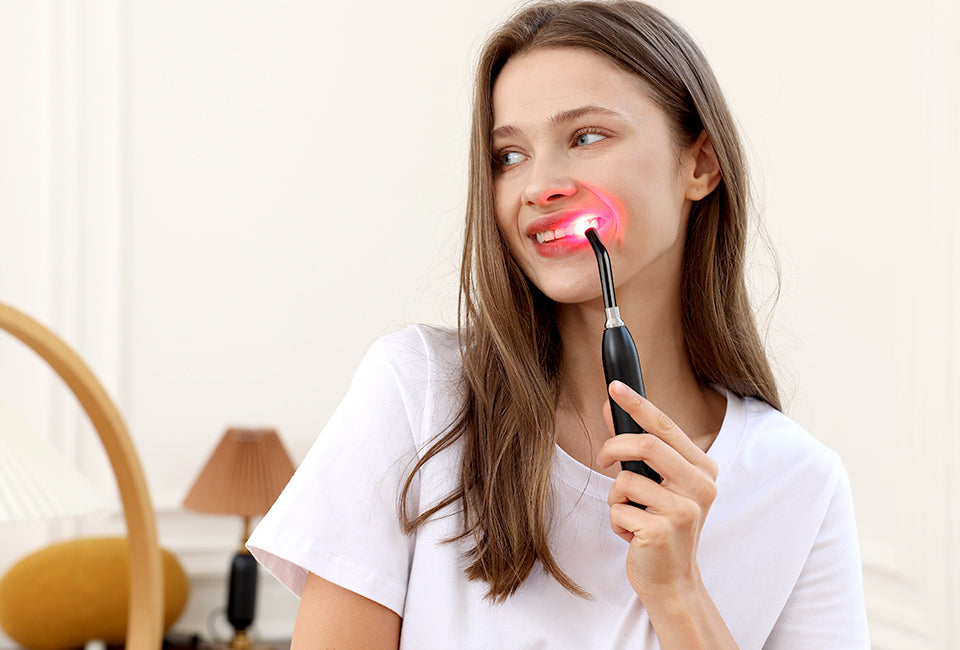Cold sores, also known as fever blisters or herpes labialis, are small, painful blisters caused by the herpes simplex virus (HSV-1). These blisters typically appear around the lips, nostrils, and sometimes even in the mouth. They are not only uncomfortable but can also be a source of embarrassment for many people. Although there is no cure for the herpes virus, various treatments can help alleviate the pain and shorten the duration of cold sores. One such treatment gaining popularity is light therapy. In this article, we will explore how light therapy works and its potential benefits for treating cold sores.
What is Light Therapy?
Light therapy, also known as phototherapy or heliotherapy, is a treatment method that involves exposing the body to specific wavelengths of light to promote healing and overall well-being. It has been used for various conditions, such as seasonal affective disorder (SAD), insomnia, and even skin conditions like psoriasis and acne. More recently, light therapy has shown promising results in treating cold sores.
How Does Light Therapy Work for Cold Sores?
Cold sores are caused by the herpes simplex virus, which lies dormant in the body until triggered by factors such as stress, illness, or sun exposure. Once activated, the virus travels to the skin surface, causing the characteristic blisters and discomfort.
Light therapy works by targeting the virus directly. The treatment uses specific wavelengths of light, usually in the ultraviolet (UV) or infrared (IR) range, to penetrate the skin and reach the affected area. This light exposure has been found to inhibit the replication of the herpes virus and reduce inflammation, thereby shortening the duration of the cold sore outbreak and reducing the severity of symptoms.
Benefits of Light Therapy for Cold Sores
-
Non-invasive and painless: Light therapy is a non-invasive and painless treatment option, making it an attractive alternative to topical creams, oral medications, and other more intrusive methods.
-
Faster healing: Studies have shown that light therapy can significantly reduce the duration of a cold sore outbreak. By inhibiting the replication of the herpes virus and reducing inflammation, light therapy promotes faster healing.
-
Reduced frequency of outbreaks: Regular use of light therapy may help reduce the frequency of cold sore outbreaks by keeping the herpes virus in check.
-
Minimal side effects: Light therapy has been found to have minimal side effects compared to some medications, which may cause stomach upset, dizziness, or even allergic reactions.
-
Increased self-confidence: As cold sores can be a source of embarrassment for many, quicker healing and reduced frequency of outbreaks can lead to increased self-confidence and improved quality of life.
Precautions and Considerations
While light therapy has shown promising results in treating cold sores, it is essential to consider the following:
-
Consult a healthcare professional: Always consult a healthcare professional before starting any new treatment, including light therapy, to ensure it is appropriate and safe for your specific situation.
-
Use a clinically proven device: Choose a light therapy device specifically designed for cold sore treatment and clinically proven to be effective. Avoid using homemade or untested devices that may cause harm or be ineffective.
-
Follow instructions carefully: Use the light therapy device as directed to ensure optimal results and avoid potential side effects or complications.
Conclusion
Light therapy offers a promising, non-invasive, and painless treatment option for cold sores. By inhibiting the replication of the herpes virus and reducing inflammation, it can shorten the duration of cold sore outbreaks, reduce the severity of symptoms, and potentially decrease the frequency of future outbreaks. However, it is essential to consult a healthcare professional and use a clinically proven device to ensure safe and effective treatment.


